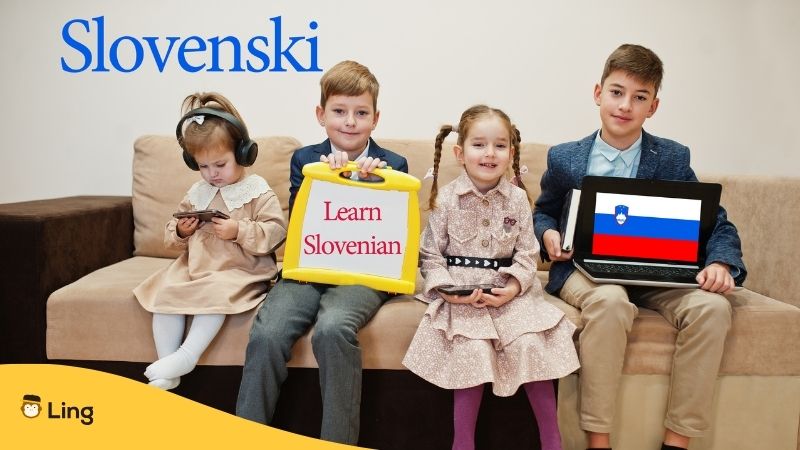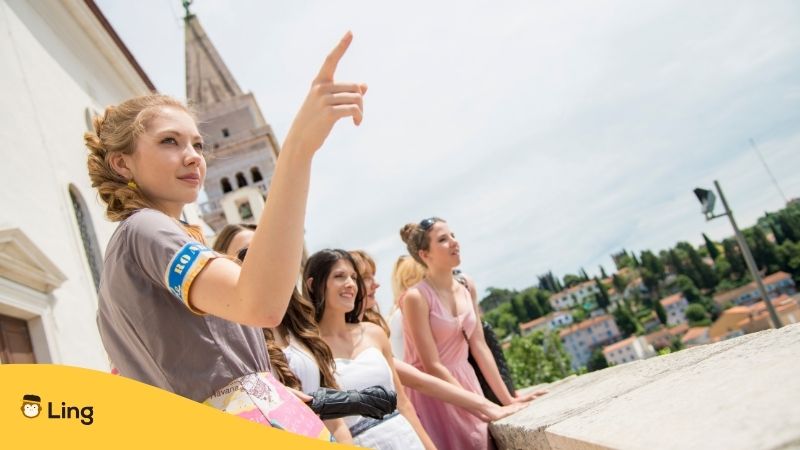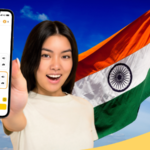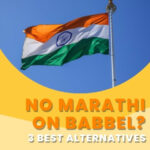Want to find out more about the captivating history of Slovenian Language and how this quirky little tongue came to be? Well, stick with me because we’re going to dive into an epic tale spanning over a thousand years!
You see, while it’s only spoken by around 2 million people globally, the Slovenian language has a seriously cool narrative. Tucked away in the snow-capped peaks of the European Alps, this resilient language survived all sorts of chaos, including invasions and deliberate oppression throughout history. Today, it remains deeply embedded in Slovenian culture and national identity.
Curious? I’m pumped to let you in on everything you need to know about the Slovene language! Trust me, this isn’t your boring old language history lesson… there’ll be plenty of juicy nuggets and surprises along the way!
Table Of Contents

What Is Slovenian Language?
Slovenian is part of the Slavic language crew, meaning it shares ancestors with other tongues like Russian, Polish, Serbian and Croatian. It specifically rolls with the Western Slavic homies though, breaking off from the ancient Proto-Slavic mother tongue.
Spoken natively by around 2.5 million people globally, Slovenian is the official language of both Slovenia as well as the European Union. Within Slovenia, it’s recognized as the language used in all public and private spheres of life – government, education, media, literature, and more.
Now, like any language that’s been around a while, Slovenian has developed a bunch of quirky regional dialects over the centuries, including the following:
- Lower Carniolan
- High Carniolan
- Carinthian
- Stajerski
- Primorski
- Prekmurski
The Lower Carniolan dialect serves as the foundation for the standardized literary version of Slovenian used in formal schooling, media publications, and across public institutions. However, dialects like Carinthian Slovenian display significant Germanic influence in vocabulary, given historical ties to Austria.
Slovenian shares mutual intelligibility with neighboring South Slavic languages to varying degrees. For example, while Slovenian speakers can generally understand Kajkavian Croatian dialects, they may struggle with more distant branches like Bulgarian or Macedonian. There are also many Slovenian speakers across border towns in Italy, Austria, and Hungary as a result of migration over the centuries.

History Of Slovenian Language
Early History
The earliest identifiable Slovenian writings are found in the Freising Manuscripts or Brižinski Spomeniki dated between 972-1093 AD. These religious texts represent the first occasion where a Slavic language was recorded in Latin script, making them some of the oldest surviving Slavic manuscripts in the world.
By the 16th century, Literary Slovenian emerges thanks largely to the Protestant Reformation writings of Primož Trubar, Adam Bohorič, and Jurij Dalmatin. Their works standardize the Slovenian vernacular, although German remains the language of nobility and governance under Austro-Hungarian rule.
During this period, German vocabulary and linguistics permeated into spoken and written Slovenian, resulting in “Germanism” influences still noticeable today. For example, native words like “blazina” (pillow) and “izvijač” (screwdriver) now sit alongside German loan words like “polster” and “šraufncigr” in everyday vernacular.
Recent History
No longer suppressed under foreign rule, vibrant Slovenian expression returned to public spaces with pride. The tongue features prominently in the arts, celebrating the nation’s poets, authors and musicians. Slovenian signage and speech fill the streets of idyllic Alpine villages and bustling modern cities alike.
Yet the language also rapidly adapted to the 21st century by embracing emerging technologies. From prominent Slovenian Wikipedia authors to gaming streamers commanding international audiences, Slovenian developed its own internet subcultures. Slang words mix with English borrowings across forums and social feeds. Software localization enables global apps to engage users in Slovenian on millions of devices.
As Slovenia integrated into the European Union, Slovenian secured its place as an official EU language – now spoken by over 2 million EU citizens. Translators, interpreters, teachers, creators, and advocates continue spreading Slovenian near and far.

Why Learn The History Of Slovenian Language?
I get it – when prepping to master a new language, it’s tempting to ignore ancient history and cram vocabulary instead, am I right? But when it comes to Slovenian, taking that journey through the past will make your learning adventure WAY more meaningful, fun…and, yeah, easier, too!
See, Slovenian has packed a whole lotta identity shifts, drama, and influences from neighboring cultures over 1000+ years. Traces of those twists and turns echo through in how uniquely musical, passionately poetic, or even German-sounding this charming tongue can be today.
So like, understanding why Slovenian dialects sound less Russian but more Italian or Serbian will shed light bulbs on everything from wacky slang to why they’re bonkers for literature! Plus, you’ll totally understand why Slovenians cling proudly to their mother tongue even while surrounded by other languages in Central Europe.
Easy Slovenian Words Related To History
Now that we’ve gone through the epic story behind this awesome language, I wanna share some key history terms that’ll impress even the grouchiest Ljubljana locals…
| English | Slovenian |
|---|---|
| History | Zgodovina |
| Ancient | Starodavno |
| Middle Ages | Srednji vek |
| Renaissance | Renesansa |
| Revolution | Revolucija |
| World War | Svetovna vojna |
| Independence | Neodvisnost |
| Empire | Imperij |
| Civilization | Civilizacija |
| Archaeology | Arheologija |
| Monarchy | Monarhija |
| Democracy | Demokracija |
| Treaty | Pogodba |
| Colony | Kolonija |
| Historical Figure | Zgodovinska osebnost |
Learn The Slovenian Language With Ling
And scene! After zipping through over a thousand years of Slovenian’s twisty-turny history, I’d say this little language has earned some legit street cred for surviving the wild ride! I mean, we tracked it from medieval poetry to modern tech, not bad Slovenia!
Now, I can’t be the only one feeling pumped to dive deeper after uncovering these colorful roots, can I? C’mon, fess up! Even a bite-sized taste of Slovenian’s backstory should be enough to spark that inspirational montage urge to learn more. But I get it, any new language looks daunting at first, all foreign grammar gobbledygook and intimidating vocabulary lists for days. Ugh.
Luckily, the Ling app has got you covered to dip your toes in nicely and easily! We’re talking short ‘n snappy dialogues, travel phrase guides, quiz games, everything a motivated newbie language explorer needs without the textbook overwhelm. Packed with need-to-know culture gems too so you’ll be talking music and cuisine with locals in no time!































































